#unmanned surface vessel
Explore tagged Tumblr posts
Text
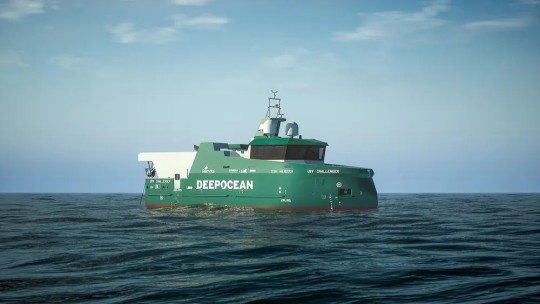
Unmanned Vessel
#maritime#ships#norway#seaworks#workboat#boats#workboats#usv#unmanned vessel#unmanned surface vessel
0 notes
Text
Global Trends in the Autonomous Boats Market
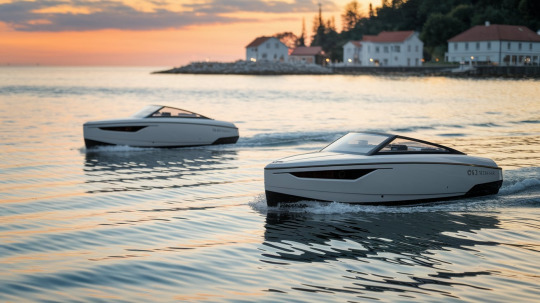
The maritime industry is undergoing a transformative shift with the advent of autonomous boats. These vessels, equipped with advanced technologies, are redefining navigation, safety, and operational efficiency on the water. The Autonomous Boats Market is poised for significant growth, driven by technological advancements and increasing demand across various sectors.
Market Overview
The Autonomous Boats Market is projected to expand from USD 558 million in 2024 to USD 872 million by 2029, reflecting a compound annual growth rate (CAGR) of 9.3%. This growth is fueled by the integration of artificial intelligence (AI), sensors, and the Internet of Things (IoT), enhancing the sustainability, safety, and efficiency of maritime operations. The rising demand for automation in commercial sectors, including urban mobility and maritime surveying, further propels market expansion.
Key Market Drivers
Growing Use of Automated Systems to Prevent Human Errors
Human error has historically been a significant factor in maritime accidents and operational inefficiencies. The adoption of automated systems in autonomous boats aims to mitigate these issues by leveraging advanced technologies such as AI, machine learning, and sophisticated sensors. These systems enable precise navigation and control, optimizing performance and facilitating real-time decision-making in response to environmental changes. The shift towards automation is expected to reduce operating costs and enhance safety across commercial, industrial, and defense sectors.
Advancements in Sensor Technology for Improved Navigation
Recent progress in sensor technologies, including LiDAR, high-resolution radar, and advanced SONAR systems, has significantly improved the navigation capabilities of autonomous boats. These sensors provide accurate and comprehensive environmental data, allowing vessels to detect and avoid obstacles effectively and make real-time adjustments. As sensor technology continues to evolve, it is anticipated to further enhance the performance and versatility of autonomous boats, opening new opportunities in both commercial and defense applications.
Download Pdf Brochure: https://www.marketsandmarkets.com/pdfdownloadNew.asp?id=222340429
Market Restraints
Vulnerability Associated with Cyber Threats
The reliance on digital systems for the operation and remote control of autonomous boats introduces vulnerabilities to cyber threats. These vessels depend heavily on software, communication networks, and data exchange systems, which could be susceptible to hacking. Cyberattacks have the potential to disrupt navigation systems, compromise control commands, and leak sensitive information, leading to operational failures and financial losses. Addressing these cybersecurity concerns necessitates the development of robust protection mechanisms, which may increase costs at both manufacturing and operational levels.
Cost-Intensive Customization of Marine Automation Systems
Customizing marine automation systems to meet specific operational and regulatory requirements entails significant costs. These expenses are further amplified by the need for ongoing maintenance, software updates, and support services tailored to particular vessel configurations and operating scenarios. The high costs associated with customization can deter operators and manufacturers from entering the market and limit the scalability of autonomous solutions, thereby hindering market growth.
Market Opportunities
New Product Launches and Contracts
The introduction of new autonomous boat models and the establishment of contracts are expected to offer lucrative opportunities to market players in the coming years. Companies investing in research and development to innovate and enhance their product offerings are likely to gain a competitive edge. Collaborations and partnerships aimed at expanding product portfolios and market reach are also anticipated to drive growth in the Autonomous Boats Market.
Regional Analysis
Europe: Leading the Autonomous Boats Market
Europe holds the largest share in the Autonomous Boats Market, attributed to its advanced technological ecosystem, robust maritime sector, and proactive regulatory framework. The region benefits from substantial research and development investments supported by both government and private sectors, driving innovation in autonomous navigation and control systems. Stringent environmental regulations mandating optimal fuel efficiency and minimal emissions further catalyze the demand for autonomous boats. Additionally, Europe's solid maritime infrastructure and increasing demand for sophisticated solutions reinforce its dominant position in the global market.
North America: Emerging Opportunities
North America is witnessing growing interest in autonomous boats, driven by advancements in AI and sensor technologies. The region's emphasis on enhancing maritime safety and operational efficiency aligns with the adoption of autonomous vessels. Collaborations between technology firms and maritime operators are fostering innovation, positioning North America as a significant player in the evolving Autonomous Boats Market.
Impact of AI on the Autonomous Boats Market
Artificial intelligence plays a pivotal role in the development and operation of autonomous boats. AI algorithms process vast amounts of data from sensors and navigation systems, enabling vessels to make informed decisions, adapt to dynamic environments, and optimize routes. The integration of AI enhances the autonomy of boats, reduces reliance on human intervention, and improves safety and efficiency. As AI technology continues to advance, its impact on the Autonomous Boats Market is expected to deepen, driving further innovation and adoption.
Global Autonomous Boats Market Ecosystem: Company Analysis
The Autonomous Boats Market comprises a diverse ecosystem of manufacturers, suppliers, and end-users. Key stakeholders include investors, academic researchers, integrators, service providers, and licensing authorities. Major players in the market are implementing various growth strategies, such as investments, collaborations, contracts, partnerships, and agreements, to strengthen their positions. Notable companies driving the market include:
Kongsberg Maritime (Norway): A leader in maritime automation and control systems, offering solutions that enhance vessel performance and safety.
ABB (Switzerland): Specializes in electrification and automation technologies, providing integrated solutions for autonomous marine operations.
Rolls-Royce PLC (UK): Focuses on the development of autonomous ship technologies, emphasizing innovation in propulsion and control systems.
Hyundai Heavy Industries (South Korea): Engages in the construction of advanced autonomous vessels, leveraging extensive shipbuilding expertise.
Fugro (Netherlands): Provides geo-data solutions and operates autonomous vessels for marine surveying and data collection.
These companies are at the forefront of innovation, driving the evolution and adoption of autonomous boats across various applications.
Ask For Sample Report: https://www.marketsandmarkets.com/requestsampleNew.asp?id=222340429
Future Outlook: The Autonomous Boats Market in the Next 5 Years
The Autonomous Boats Market is set to undergo substantial transformations over the next five years, driven by technological advancements and increasing adoption across commercial, recreational, and defense sectors. Key trends that will shape the market include:
Expansion of Commercial Applications
With automation becoming a crucial element in maritime operations, commercial sectors will continue integrating autonomous boats for applications such as cargo transportation, offshore energy exploration, and urban mobility. Autonomous ferries and water taxis are expected to see significant adoption in densely populated coastal cities, reducing congestion on roads while enhancing mobility solutions.
Rise in Military & Defense Investments
The defense sector will increasingly invest in autonomous vessels for surveillance, reconnaissance, and security applications. Countries are recognizing the strategic advantage of unmanned surface vessels (USVs) in naval operations, leading to higher spending on research and development in this domain.
Enhancements in AI-Driven Navigation and Collision Avoidance
Artificial intelligence will continue to refine the decision-making processes of autonomous boats. Improvements in AI algorithms, machine learning, and real-time data processing will enhance predictive navigation, collision avoidance, and automated docking capabilities. These advancements will further boost safety and efficiency.
Adoption of Sustainable Propulsion Systems
The shift toward sustainability will push manufacturers to explore hybrid and fully electric propulsion systems. While fuel-powered vessels currently dominate the market, future advancements will focus on reducing carbon emissions through greener energy alternatives. This transition will be particularly noticeable in Europe, where stringent environmental regulations are driving change.
Strengthening of Cybersecurity Measures
As reliance on digital infrastructure increases, cybersecurity concerns will remain a significant challenge. Over the next five years, efforts to fortify autonomous boat systems against cyber threats will intensify. Companies will invest in more robust encryption technologies, AI-driven threat detection, and advanced authentication methods to prevent cyberattacks.
Growth of the North American Market
North America is expected to experience accelerated growth in the Autonomous Boats Market, fueled by rising investments in automation, AI, and maritime safety technologies. The expansion of smart ports and digitalization of maritime operations will drive demand for autonomous vessels in the region.
The Autonomous Boats Market is at the forefront of a maritime revolution, poised for substantial growth in the coming years. Advancements in AI, sensor technology, and sustainable propulsion systems are transforming the industry, offering enhanced safety, efficiency, and operational reliability. While cybersecurity and customization costs present challenges, the market is expected to overcome these hurdles through innovation and strategic collaborations.
With Europe leading the market and North America emerging as a strong contender, autonomous boats are set to redefine maritime transportation, defense strategies, and commercial shipping. As key players continue to innovate and expand their offerings, the future of autonomous boats promises to be dynamic, transformative, and full of opportunities.
#autonomous boats market#ai in maritime industry#unmanned surface vessels#maritime automation#autonomous ship technology#smart shipping solutions
0 notes
Text
Transforming Naval Operations: The Role of Advanced USV Technologies in Enhancing Capability and Flexibility
The technological advancements in Unmanned Surface Vessels USVs) are reshaping the US Navy's capabilities. USVs are equipped with autonomous navigation systems artificial intelligence, and advanced sensors, making them highly efficient for surveillance, reconnaissance, and even combat operations. The integration of AI allows USVs to perform complex maneuvers, avoid obstacles, and operate in dynamic maritime environments with minimal human intervention.
A key technological feature of USVs is their modularity. These vessels can be outfitted with a variety of payloads, such as radar systems, sonar, or electronic warfare tools, depending on the mission requirements. This modular approach enhances operational flexibility, allowing the Navy to adapt the vessels to various scenarios.
Communications technology also plays a crucial role. USVs must maintain secure, real-time data links with manned vessels and command centers, even in contested environments where signal jamming or cyberattacks are possible. Developments in satellite communications and encryption are critical to ensuring seamless coordination between manned and unmanned assets.
Another technological challenge is the development of autonomous decision-making algorithms. These algorithms enable USVs to handle complex tasks independently, such as identifying threats and making evasive maneuvers. However, as autonomy increases, ensuring reliability and preventing unintended actions in unpredictable situations remains a key concern.
Battery and propulsion technologies are also critical, as USVs require long-endurance power systems for extended missions. Advances in hybrid propulsion and energy-efficient designs are helping to extend the operational range of these vessels. ePropelled’s team based in Laconia, NH leading edge propulsion and generations systems enable our customers to build the best of bread vehicles in the air, land, and sea.
#uncrewed vehicles#ePropelled#ePropelled Systems#Unmanned Surface Vessels#autonomous navigation systems#usv#usvs#uncrewed surface vehicles#uncrewed surface vessels#ePropelled Motors#ePropelled Electric Motors#ePropelled Solutions
0 notes
Text
The terrifying sound of silence
"Where is the Human?"
A question that incites dread across the Galaxy. And no greater when the Human in question is an engineer.
For weeks after her arrival aboard the Coalition joint exploration vessel Ulmanar's Resilience, the Human Jenna had been pestering everyone about the technical specifications, tolerances, build schematics, design philosophy, power outputs, and countless other microscopic details.
At first everything seemed normal, Humans are known to be curios, especially the technically minded ones, and her job would entail managing parts of the vessel's systems, so everyone was as helpful as they could.
Then Jenna started tinkering.
'Optimizing' is how she described it.
Admittedly, most of her modifications resulted in marginal improvements to energy distribution and mechanical motion efficiency. Although the fact the power reactors started to make audible noise was... unusual, but the readings said everything was fine, and the fact a day passed without explosions put everyone at ease - this was partly why a Human engineer was brought along in the first place.
During a short stop at a supply station before our first descent onto an uncharted planet, Jenna was the first to rush off with several cargo drones in the direction of the shipyard district. She was the last to return mere minutes before the scheduled departure, all covered in dust and oil, and the drones straining under the weight of everything she had procured.
"Don't worry, it's gonna be awesome." she declared.
It had been a while since our training and none of us had encountered other Humans in the meantime, so all of us had forgotten to immediately be alarmed by those words and question everything she was doing.
The following weeks of transit to our destination were marked by a severe lack of Jenna interactions or even sightings. The shuttle bay was a mess of disassembled craft, loose parts flung about, and sparks and rattling noises coming from the bowels of whatever was going on.
Unbeknownst to us, for the idea itself was ludicrous, Jenna was only within the vessel half of the time during this period. The other half she was in her spacesuit tinkering with the exterior of the vessel. Laser cutters and cold welding, not to mention the vacuum of space, make for a very silent work environment.
Perhaps it was instinct for most of us to avoid the confusing actions of a predator species descendant, as once we arrived to the designated planet, we learned we only had two surface shuttles left. Out of sixteen.
"This baby can land now!" Jenna happily said.
Confused beyond measure, we asked: "What do you mean 'this baby?"
"The ship, you know, Ulmanar's Resilience. We can land the whole thing now instead of doing this boring shuttling down thing. Plus the terraforming bot wouldn't fit in a shuttle anyway."
"The what?" our confusion continued.
"Yeah, we're gonna terraform this planet, right? That's what I got from the briefing back before joining you guys." she explained with innocence in her eyes.
There must have been some miscommunication, but the work had been done, and as far as our own technicians (who were scolded harshly for not keeping track of such grand changes to the entire vessel) did confirm that, as far as their understanding of mechanics and physics went, Ulmanar's Resilience can now indeed endure descent and commence takeoff from up to a 6G world.
So I guess that's what we're doing now. Preliminary surveys from past unmanned missions had suggested this world was once in the past and potentially now habitable again, and we suppose the Humans had decided to just set that in motion before more detailed analysis had occurred.
"Oh yeah," Jenna interjected, "if it turns out this place is, like, super dangerous and a threat to the Galaxy if we accidentally wake something up, I modified one of the scanning dishes to be a deep drill laser. Two hours of firing it at the core of the planet and it'll go boom."
...
"The planet, not the laser dish. That will explode if left on for more than three hours."
...
#humans are space orcs#humans are space oddities#humans are space australians#humans are deathworlders#humanity fuck yeah#carionto
352 notes
·
View notes
Text

900 Artifacts From Ming Dynasty Shipwrecks Found in South China Sea
The trove of objects—including pottery, porcelain, shells and coins—was found roughly a mile below the surface.
Underwater archaeologists in China have recovered more than 900 artifacts from two merchant vessels that sank to the bottom of the South China Sea during the Ming dynasty.
The ships are located roughly a mile below the surface some 93 miles southeast of the island of Hainan, reports the South China Morning Post’s Kamun Lai. They are situated about 14 miles apart from one another.


During three phases over the past year, researchers hauled up 890 objects from the first vessel, including copper coins, pottery and porcelain, according to a statement from China’s National Cultural Heritage Administration (NCHA). That’s just a small fraction of the more than 10,000 items found at the site. Archaeologists suspect the vessel was transporting porcelain from Jingdezhen, China, when it sank.
The team recovered 38 items from the second ship, including shells, deer antlers, porcelain, pottery and ebony logs that likely originated from somewhere in the Indian Ocean.
Archaeologists think the ships operated during different parts of the Ming dynasty, which lasted from 1368 to 1644.



Many of the artifacts came from the Zhengde period of the Ming dynasty, which spanned 1505 to 1521. But others may be older, dating back to the time of Emperor Hongzhi, who reigned from 1487 to 1505, as Chris Oberholtz reported last year.
Archaeologists used manned and unmanned submersibles to collect the artifacts and gather sediment samples from the sea floor. They also documented the wreck sites with high-definition underwater cameras and a 3D laser scanner.
The project was a collaboration between the National Center for Archaeology, the Chinese Academy of Science and a museum in Hainan.
“The discovery provides evidence that Chinese ancestors developed, utilized and traveled to and from the South China Sea, with the two shipwrecks serving as important witnesses to trade and cultural exchanges along the ancient Maritime Silk Road,” says Guan Qiang, deputy head of the NCHA, in the agency’s statement.
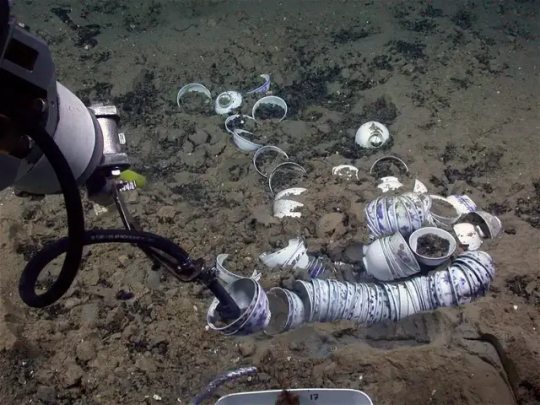

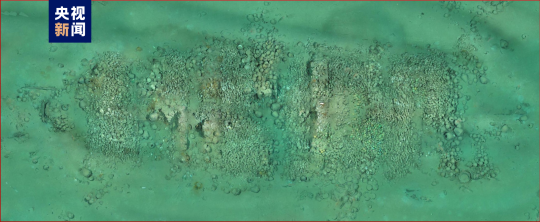
During the Ming dynasty, China’s population doubled, and the country formed vital cultural ties with the West. Ming porcelain, with its classic blue and white color scheme, became an especially popular export. China also exported silk and imported new foods, including peanuts and sweet potatoes.
The period had its own distinctive artistic aesthetic. As the Smithsonian’s National Museum of Asian Art writes, “Palace painters excelled in religious themes, moralizing narrative subjects, auspicious bird-and-flower motifs and large-scale landscape compositions.”
The shipwreck treasures aren’t the only recent discoveries in the South China Sea, according to CBS News’ Stephen Smith. Just last month, officials announced the discovery of a World War II-era American Navy submarine off the Philippine island of Luzon.
By Sarah Kuta.

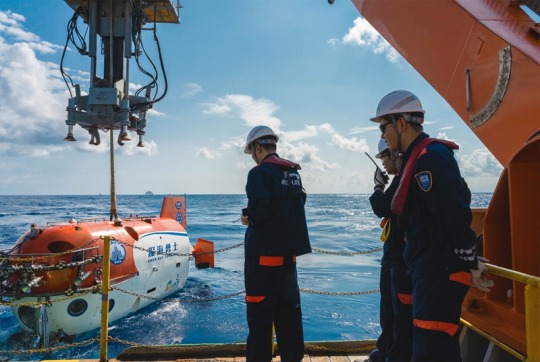
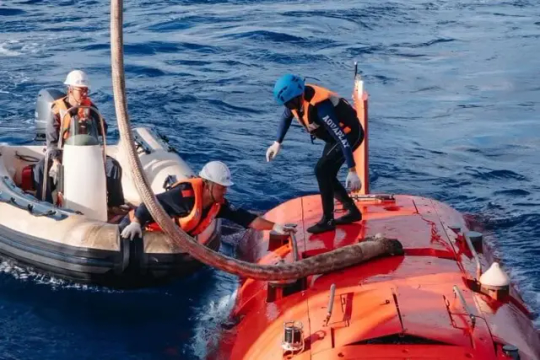

#900 Artifacts From Ming Dynasty Shipwrecks Found in South China Sea#island of Hainan#Ming dynasty#shipwreck#ancient artifacts#archeology#archeolgst#history#history news#ancient history#ancient culture#ancient civilizations#ancient china#chinese history#chinese art#ancient art
1K notes
·
View notes
Text

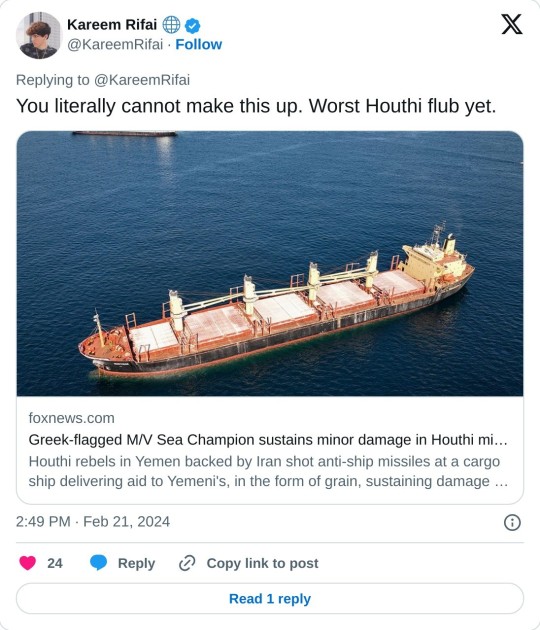
Iranian-backed Houthi terrorists fired two anti-ship ballistic missiles at a Greek-flagged ship headed to Yemen to deliver grain on Monday, causing minor damage, according to U.S. Central Command.
Despite the minor damage on the U.S.-owned M/V Sea Champion, the ship continued on course to Aden in Yemen, where it ultimately delivered the grain for the benefit of the Yemeni people.
Central Command said the M/V Sea Champion has delivered humanitarian aid to the country 11 times over the past five years.
"Houthi aggression in the region has exacerbated already high levels of need in conflict-impacted Yemen, which remains one of the largest humanitarian crises in the world, with nearly 80 percent of the entire population needing humanitarian assistance," Central Command said. "We are committed to countering the Houthis’ malign activities, which directly endanger the imports of foodstuff and humanitarian aid to Yemen."
Another ship in the Gulf of Aden, the British-registered, Lebanese-operated Rubymar, sustained damage on Sunday after "an explosion in close proximity to the vessel."
The explosion was reportedly caused by two missiles fired at the ship by Houthi rebels and resulted in the ship taking on water.
The crew was able to evacuate the vessel safely.
Houthi Brig. Gen. Yahya Saree later issued a statement claiming the rebel group’s responsibility for the attack, saying the vessel was "now at risk of potentially sinking."
"The ship suffered catastrophic damages and came to a complete halt," Saree said.
The Houthis also claimed to have downed an American drone Monday in the Yemeni port city of Hodeidah, according to Reuters. U.S. Central Command, which operates in the region, did not immediately respond to a request for comment from Fox News Digital.
The Houthis last November took out a U.S. MQ-9 Reaper drone near the Yemeni coast.
The reported attacks come after the U.S. launched five "self-defense" airstrikes against a series of Houthi rebel positions in Yemen on Saturday.
The strikes targeted three anti-ship missile batteries, one unmanned underwater vessel (UUV) and another unmanned surface vessel (USV), U.S. Central Command (CENTCOM) announced Sunday.
"This is the first observed Houthi employment of a UUV since attacks began on Oct. 23," CENTCOM said in a statement.
159 notes
·
View notes
Text
US launches first-ever 240-ton ship that needs zero crew to operate
12 notes
·
View notes
Text
In the coming weeks, uncrewed surface vessels (USVs) will join NATO’s new Baltic Sentry effort to protect power and communications cables running under the Baltic Sea, some of which have recently been sabotaged. The USVs, also known as drone boats, will help establish an enhanced common operating picture to give participating nations a better sense of potential threats and speed up any response. [...] There will be at least 20 USVs assigned to Baltic Sentry, a NATO spokesman told The War Zone Friday afternoon.
Gotta move to unmanned crews cause no way are we going to hire 20 people for national defense priorities, what are we made of money?
10 notes
·
View notes
Text
New footage published by the Yemen government shows the moment the ship MV Tutor was struck by two explosive unmanned surface vessels, which later resulted in the ship sinking to the bottom of the ocean.
20 notes
·
View notes
Text

A-10 Warthogs Escort Ballistic Missile Submarine USS Wyoming
For the second time in the last few months, A-10C jets escorted an Ohio-class nuclear submarine and also took part in a life fire exercise.
Stefano D'Urso
A-10 submarine
An A-10C Thunderbolt II maneuvers over the ballistic missile submarine USS Wyoming. (Image credit: U.S. Navy)
A formation of A-10C Thunderbolt II close-air support aircraft were employed once again to escort an Ohio-class ballistic missile submarine, the USS Wyoming (SSBN 742). The images, shared on social media by Submarine Group Ten, depict Wyoming and its escorts navigating in an undisclosed location in the United States, with six A-10Cs flying overhead.
The aircraft, assigned to Moody Air Force Base, escorted the submarine and were also involved in a live fire exercise with their GAU-8 30 mm gun and 70 mm rockets. The U.S. Coast Guard Maritime Force Protection Unit Kings Bay, USNS Black Powder (T-AGSE-1), and USNS Westwind (T-AGSE-2) also participated in the escort of the submarine.
The rare sighting is not unprecedented, as earlier this year the USS Nebraska was also escorted by a quartet of A-10 Warthogs while navigating the Strait of San Juan de Fuca. In that occasion, however, the A-10s did not take part in any life fire activity and flew without carrying external ordnance.
“Joint operations, such as this one which involved the Air Force, Coast Guard, and Navy, ensure the U.S. military is ready to meet its security commitments at home and abroad,” mentioned the statements on both occasions. The services did not further elaborate on the extend of the joint operations.
The A-10C and the maritime domain
While no other details were released, it appears the Warthogs practiced overwatch of the extremely high-value strategic asset during one of the most vulnerable phases of its navigation. The live fire exercise might have also been used to simulate the defense of the USS Wyoming from surface threats.
A-10s have been used to target swarms of boats and to strike small naval vessels in previous training exercises, demonstrating the attention that these types of asymmetric threats attracted following recent real word events, such the attacks in the Red Sea or the Black Sea.
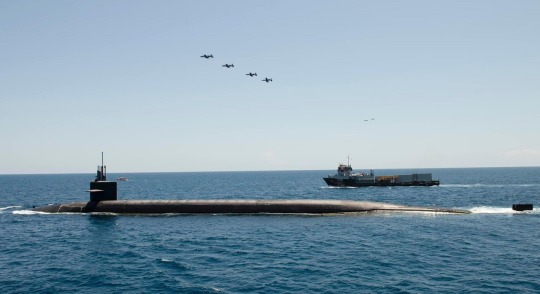
Four A-10Cs fly over the USS Wyoming, while two other jets can be seen in the background. (Image credit: U.S. Navy)
The A-10, which was born as a pure Close Air Support and anti-tank platform, has never been employed to large extent in the maritime domain, seeing only limited use. One of the most notable episodes was in 2011 during Operation Unified Protector, when an A-10 and a P-3C Orion engaged together a patrol boat and several small attack craft in the port of Misrata, Libya.
Since the last two couple of years, the Warthog was part of multiple Maritime Surface Warfare exercises and conducted unit defense training. One of the exercises saw, in Sept. 2023, two A-10s engage simulated surface threats in the Gulf of Oman with the Arleigh Burke-class guided-missile destroyer USS Stethem.
The A-10’s maneuverability at low airspeeds and altitude, highly accurate weapons-delivery capabilities, and extended loiter time are all key attributes that make it highly effective at providing aerial support to American and coalition forces on land and at sea, mentioned the U.S. Air Force after one of these exercises last year.
Asymmetric threats to maritime assets
The events in the Black Sea and Red Sea highlighted once again how asymmetric threats cannot be underestimated. In the past, the U.S. Navy had experience countering small fast attack crafts, especially in the Persian Gulf where Iran regularly harassed U.S. ships in the area.
More recently, Ukraine and the Houthis demonstrated the effectiveness and the danger posed by Unmanned Surface Vehicles (USVs), used in kamikaze attacks against larger ships. The small, unmanned boats, filled with explosives, can exploit their limited dimensions and high maneuverability to avoid detection and interception, with devastating effects on their targets.

An A-10C Thunderbolt II engages a simulated target with its GAU-8 30 mm gun. (Image credit: U.S. Navy)
Highly defended targets could be overwhelmed by coordinated swarms of USVs, challenging the traditional naval strategies. The presence of multiple, fast approaching and maneuvering targets against a limited number of weapon systems on a naval asset could confuse the defenses, which would be forced to prioritize targets as to maximize the hit probability and avoid wasting precious ammo.
And here is where overhead protection from and asset like the A-10C could come in handy, as it provides to naval commanders a number of options both for surveillance and kinetic effects.
About Stefano D'Urso
@TheAviationist.com
Stefano D'Urso is a freelance journalist and contributor to TheAviationist based in Lecce, Italy. A graduate in Industral Engineering he's also studying to achieve a Master Degree in Aerospace Engineering. Electronic Warfare, Loitering Munitions and OSINT techniques applied to the world of military operations and current conflicts are among his areas of expertise.
14 notes
·
View notes
Text
youtube
The Staggering Cost of Losing Europe's Arms Market Part 5 - Europe's Naval Power continued
Today we continue where we left off last week, and explore details of European naval power and its reliance on U.S. technologies in today's deep dive episode. We're continuing our exploration of Europe's naval capabilities, focusing on the systems not covered in our last episode about surface ships. Here's what you can expect: Vertical Launch System (VLS) Dependencies: Discover how almost all European navies, except Sweden, rely heavily on the U.S.-made VLS, a staple in many of Europe's destroyers and frigates. We discuss the alternatives being developed by Britain’s BAE Systems and Sweden’s direct deck launchers, highlighting their potential to replace the ubiquitous Mark 41 VLS. Seahawk Helicopters in European Navies: Dive into the widespread use of MH-60R Seahawks across European naval forces, with detailed cost analyses and operational stats from countries like Denmark, Greece, Norway, Spain, and Turkey. Compare these with European models like the NH90 and the Eurocopter (Airbus) Panther, focusing on their roles, capabilities, and economic implications. Naval Air Defense Systems: American Sea Sparrow: Review the adoption of this system by various European nations with specific investment figures and deployment stats. European Alternatives: Examine the Principal Anti Air Missile System (PAAMS) known as Sea Viper in the UK, and the Sea Ceptor system, both utilizing the Aster missile family. These systems represent Europe's indigenous response to naval air threats, with deployment on new ships across Italian, British, and French navies. Helicopter Carriers: Highlight the strategic importance of helicopter carriers in modern naval warfare, focusing on France's Mistral class and Italy's similar capabilities. Discuss the potential for these vessels to be converted into drone hubs, enhancing their utility in unmanned warfare scenarios. Submarine Capabilities: European Conventional and Nuclear Submarines: Detail Europe's comprehensive submarine capabilities, including air-independent, conventional, and nuclear-powered variants. Special emphasis on Germany’s A212 submarines and France's nuclear-powered Barracuda (Suffren-class) submarines. Astute-class Submarines: Elaborate on Britain's nuclear-powered fleet submarines, noting their advanced technology, stealth features, and armament capabilities, contrasting with France's Triomphant-class for a comparative look at European nuclear deterrents. Fast Attack Craft and Missile Boats: Cover the role and specifications of notable European models like Finland's Hamina-class missile boats and Sweden's Combat Boat 90 (CB90). Discuss their operational roles, technological advancements, and strategic importance in the Baltic and beyond.
#Europe#defense of Europe#military history#Sweden#France#UK#submarine#missile#Finland#defense of freedom#Youtube#naval history
3 notes
·
View notes
Text
In small, remote corners of the planet nobody was paying much attention to, between factions nobody knew much about, the undeclared and largely imperceptible war had been under way for years. All up and down the Northern latitudes, clandestine transmitters had been deployed amid pinnacles of ice, in abandoned mining works, in the secret courtyards of ancient Iron-Age fortresses, manned and unmanned, lonely and unearthly in the iceblink. On sky-piercing crags as likely to be frozen seabird guano as rock, scouts of Earth's Field, desperate, insomniac, interrogated horizons as to any signs of their relief, who were often years late. ... And indeed for some, the Polar night would last forever-they would pass from the Earth amid unreportable splendor, the aurora in the sky raging up and down spectra visible and invisible. Souls bound to the planetary lines of force, swept pole to pole and through the fabled interior regions as well....
Manœuvring in vessels camouflaged in naval-style "dazzle painting," whereby areas of the structure could actually disappear and reappear in clouds of chromatic twinkling, scientist-skyfarers industriously gathered their data, all of deepest interest to the enterprisers convened leagues below, at intelligence centers on the surface such as the Inter-Group Laboratory for Opticomagnetic Observation (I.G.L.O.O.), a radiational clearing-house in Northern Alaska, which these days was looking more like some Lloyd's of the high spectrum, with everyone waiting anxiously for the next fateful Lutine announcement.
"Dangerous conditions lately."
"Hell, some days you'd give the world for a nice easygoing
Indian attack."
"I tell you it can't go on like this."
A few heads turned, though the plangent note was long familiar. "Presumptuous whelp, what would you know, you weren't even around for the last eclipse."
It was a dark assembly-room, its windows shuttered in iron, illuminated in patches by green-shaded lamps gas and electric, a gloom relieved only by the brief glittering of watch-chains across dark vests, pen-nibs, coins, dining utensils, glasses, and bottles. Outside, in streets of beaten snow, wolves, foraging far from home, howled all but eloquently.
"Yes-these days in the business too many people your age altogether. Unreflective steps, harmful consequences, no attention to history or the sacrifices of those who've gone before, so forth...."
Thomas Pynchon, Against the Day
9 notes
·
View notes
Text
Titanic sub suffered 'catastrophic implosion,' all five aboard dead
By Joseph Ax and Steve Gorman
23 June 2023
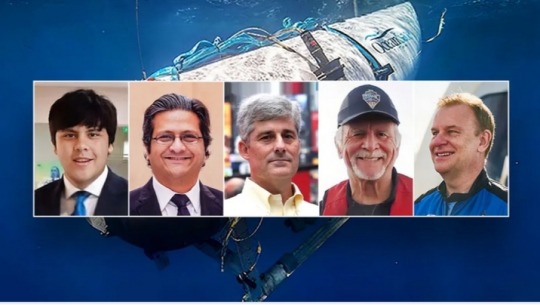
June 22 (Reuters) - The five people aboard a missing submersible died in a "catastrophic implosion," a U.S. Coast Guard official said on Thursday, bringing a grim end to the international search for the vessel that was lost during a deep-sea voyage to the wreck of the Titanic.
"These men were true explorers who shared a distinct spirit of adventure, and a deep passion for exploring and protecting the world's oceans," OceanGate Expeditions, the U.S.-based company that operated the Titan submersible, said in a statement.
"Our hearts are with these five souls and every member of their families during this tragic time."
An unmanned robot deployed from a Canadian ship discovered the wreckage of the Titan on Thursday morning about 1,600 feet (488 meters) from the bow of the century-old wreck, 2-1/2 miles (4 km) below the surface in a remote area of the North Atlantic, U.S. Coast Guard Rear Admiral John Mauger said at a press conference.
"The debris field here is consistent with a catastrophic implosion of the vehicle," Mauger said.
The five aboard included the British billionaire and explorer Hamish Harding, 58; Pakistani-born business magnate Shahzada Dawood, 48, and his 19-year-old son, Suleman, both British citizens; French oceanographer and Titanic expert Paul-Henri Nargeolet, 77, who had visited the wreck dozens of times; and Stockton Rush, the American founder and chief executive of OceanGate, who was piloting the submersible.
Rescue teams from several countries had spent days searching thousands of square miles of open seas with planes and ships for any sign of the 22-foot (6.7-meter) Titan.
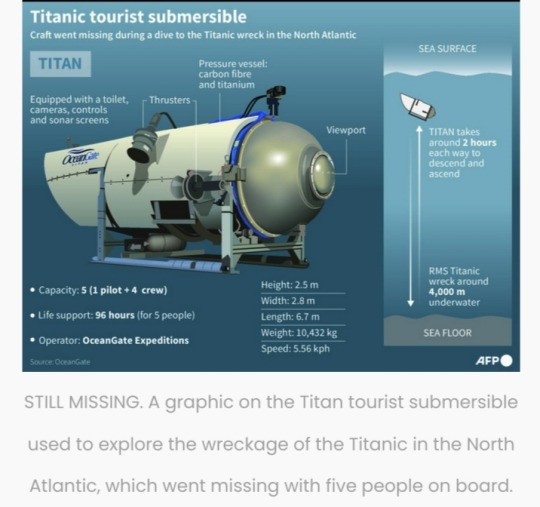
The submersible lost contact with its support ship on Sunday morning, June 18, about an hour and 45 minutes into what should have been a two-hour descent.
Mauger said it was too early to tell when the vessel's failure occurred.
The search operation had sonar buoys in the water for more than three days and had not detected any sort of loud explosive noise during the period, Mauger said.
The buoys had picked up some sounds on Tuesday and Wednesday that temporarily offered hope the people on board the Titan were alive and trying to communicate by banging on the hull.
But officials said analysis of the sound was inconclusive and that the noises might not have emanated from the Titan at all.
"There doesn't appear to be any relation between the noises and the location of the debris field on the sea floor," Mauger said on Thursday.

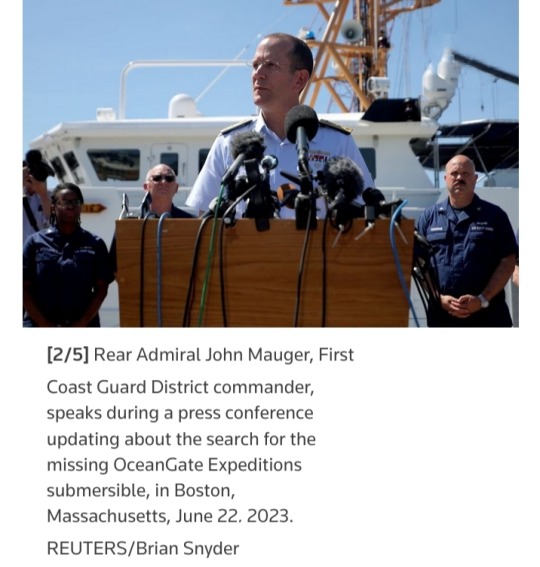
Robotic craft on the ocean floor will continue to gather evidence, Mauger said, but it is not clear whether recovering the bodies will be possible given the nature of the accident and the extreme conditions at those depths.
Five major pieces of the Titan have been found, including most of the pressure hull, officials said.
SAFETY CONCERNS
The search had grown increasingly desperate on Thursday, when the estimated 96-hour air supply was expected to run out if the Titan were still intact.
The Titanic, which sank in 1912 on its maiden voyage after hitting an iceberg, killing more than 1,500 people, lies about 900 miles (1,450 km) east of Cape Cod, Massachusetts, and 400 miles (640 km) south of St. John's, Newfoundland.
The expedition to the wreck, which OceanGate has been operating since 2021, cost $250,000 per person, according to OceanGate's website.
Questions about Titan's safety were raised in 2018 during a symposium of submersible industry experts and in a lawsuit by OceanGate's former head of marine operations, which was settled later that year.
The sweeping search covered more than 10,000 square miles of ocean - about the size of the U.S. state of Massachusetts.
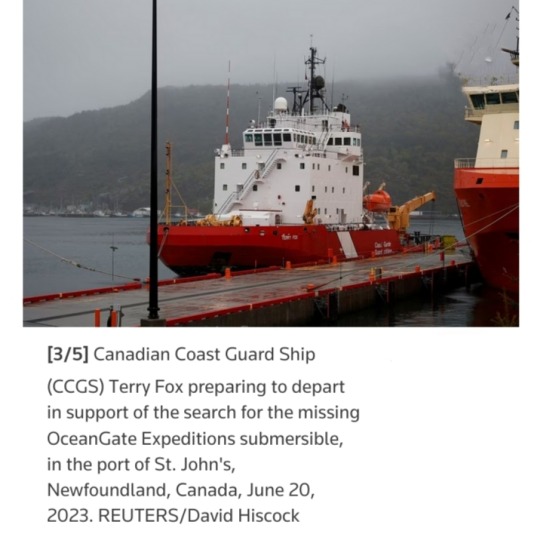
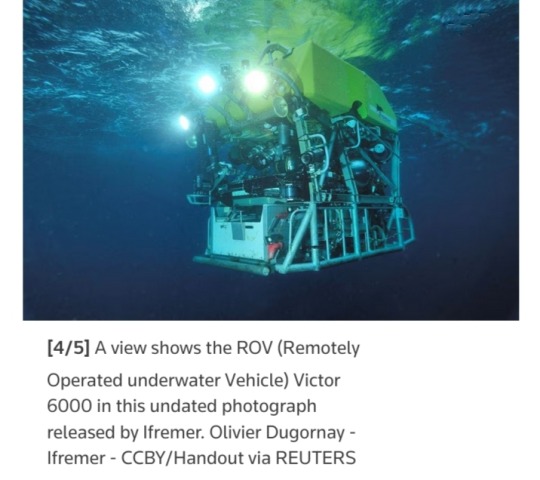
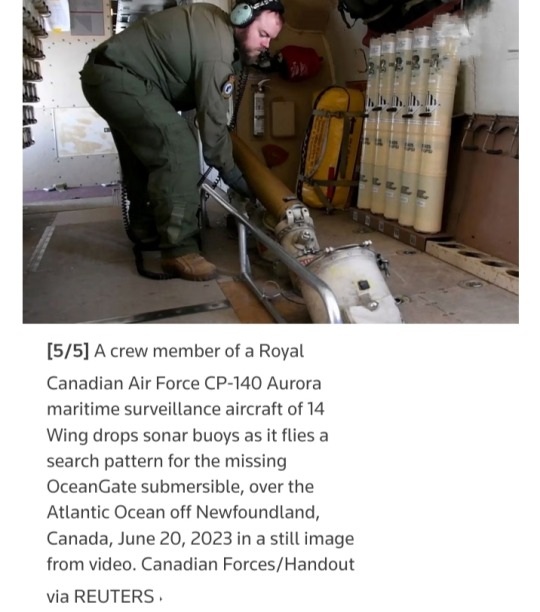
On Thursday, the deployment of two specialized deep-sea unmanned vehicles expanded the search to the ocean's depths, where immense pressure and pitch-black darkness complicated the mission.
The missing submersible and subsequent hunt captured worldwide attention, in part due to the mythology surrounding the Titanic.
The "unsinkable" British passenger liner has inspired both nonfiction and fiction accounts for a century, including the James Cameron blockbuster 1997 movie, which rekindled popular interest in the story.
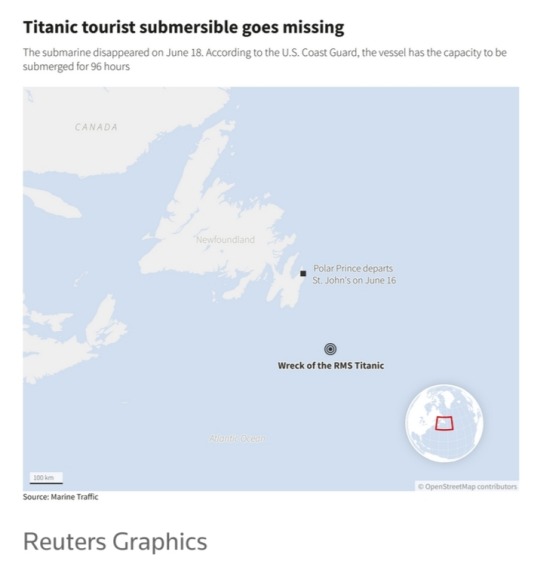
#OceanGate Expeditions#Titan submersible#catastrophic implosion#U.S. Coast Guard#U.S. Coast Guard Rear Admiral John Mauger#Titan#Titanic#Canadian Coast Guard Ship (CCGS) Terry Fox#OceanGate Expeditions submersible#Royal Canadian Air Force CP-140 Aurora#ROV#expedition#deep-sea voyage#wreckage
32 notes
·
View notes
Text
Russian ship appears to get hit by unmanned surface vessel in drone video
The Russian reconnaissance ship Ivan Khurs was seemingly hit by an unmanned surface vessel in the Black Sea new video shows, disputing a claim by Moscow, which said on Wednesday it had been able to thwart a Ukrainian attack on the craft. #cnn #news #shorts
youtube
View On WordPress
2 notes
·
View notes
Text
10 Essential Navy Current Affairs for 2025
As the world sails deeper into 2025, the seas have become more than just watery expanses — they are arenas of innovation, influence, and international power play. The global naval landscape is undergoing profound transformation, driven by technological disruption, climate change, geopolitical rivalry, and shifting defense priorities. For defense enthusiasts, strategic thinkers, and curious minds alike, understanding the navy current affairs 2025 is crucial.
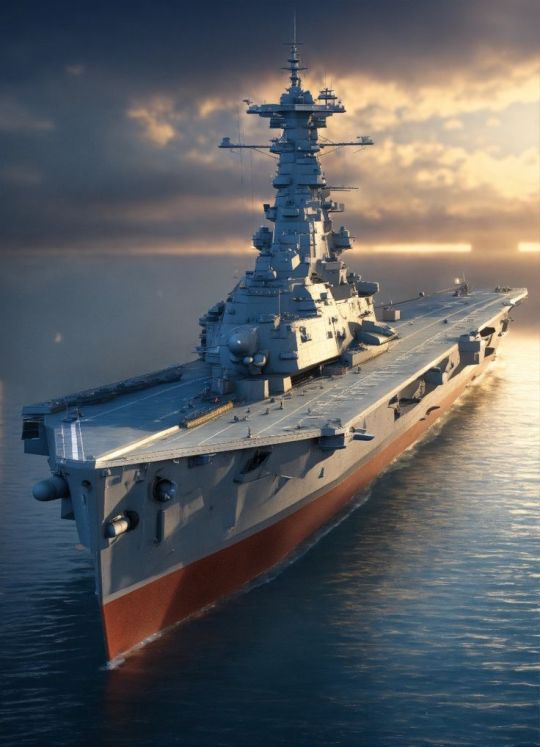
From unmanned fleets to Arctic deployments, here are the 10 essential navy current affairs for 2025 you absolutely need to know — not just headlines, but the deeper ripples shaping our maritime future.
1. Rise of Autonomous Naval Warfare
One of the standout features of navy current affairs 2025 is the operational deployment of autonomous surface and underwater vessels. The U.S. Navy, along with the UK and Australia, has officially integrated AI-powered ghost fleets into routine patrols in the Indo-Pacific. These unmanned vessels, capable of independent decision-making, are changing the face of surveillance and combat logistics.
2. Indian Navy’s Blue-Water Ambition Takes Shape
India’s ambitious naval modernization program entered a new phase in 2025. With the launch of its third aircraft carrier — INS Vishal — and commissioning of multiple stealth submarines under Project 75I, India asserts itself as a central maritime power in the Indian Ocean Region. This expansion aligns with India’s Security and Growth for All in the Region (SAGAR) vision.
3. NATO Expands Arctic Patrols
Melting ice in the Arctic has opened new maritime routes, prompting NATO to strengthen its presence in the High North. Operation FrostGuard, initiated in early 2025, includes joint patrols by Norway, Canada, and the U.S. to monitor activity along the Northern Sea Route, a potential hotspot for Russian and Chinese maneuvering.
#ArcticNavy #NATOPatrols #FrostGuard2025
4. Climate Change and Naval Strategy
Navies worldwide are adapting to climate-induced operational challenges. Rising sea levels, intensifying cyclones, and eroding coastlines have pushed naval bases — especially in the Pacific and Southeast Asia — to adopt resilient infrastructure. In 2025, the Philippine Navy began relocation of key assets inland, while the U.S. Navy announced a green fleet initiative aiming for 80% renewable power by 2030.
5. South China Sea Flashpoints Escalate
Tensions in the South China Sea continue to simmer. In March 2025, a skirmish involving Vietnamese coast guard and a Chinese militia vessel near the Spratly Islands reignited debates on freedom of navigation. Multilateral naval drills, including Japan, Australia, and the Philippines, further showcased resistance to unilateral territorial claims.
6. Cybersecurity Becomes Naval Priority
Naval warfare is no longer just steel and torpedoes — it’s ones and zeros. The navy current affairs 2025 feature a sharp pivot toward digital resilience. Several navies have reported attempted cyber intrusions in warship networks. The Royal Navy recently launched its first dedicated Cyber Command at Sea (CCS), tasked with defending and launching cyber operations in maritime zones.
7. Revival of Anti-Submarine Warfare (ASW)
With submarines becoming quieter and stealthier, ASW has returned to prominence. In 2025, the Japanese Maritime Self-Defense Force tested an AI-powered sonar network across the East China Sea, significantly improving detection rates of foreign submarines. The UK’s new Poseidon P-8 aircraft have also become key players in underwater tracking.
8. France and Germany's Joint Maritime Task Force
Europe is stepping up naval collaboration. France and Germany launched the Joint Maritime Task Force (JMTF) in 2025 to enhance European maritime autonomy. This combined fleet will conduct humanitarian missions, anti-piracy operations, and support EU interests in Africa and the Mediterranean.
9. Space-Based Naval Surveillance
What was once the domain of sci-fi is now naval protocol. In 2025, navies began relying more on satellite constellations to track maritime traffic in real-time. The U.S. Navy’s “Hawkeye Orbital Network” provides 24/7 imaging of strategic chokepoints such as the Strait of Hormuz and the Malacca Strait.
10. Women Leading the Helm
Representation is rewriting naval tradition. In a historic move, Admiral Priya Singh of the Indian Navy and Rear Admiral Sarah Thompson of the Royal Canadian Navy became the first women to lead operational naval fleets in active conflict zones. Their leadership marks a powerful shift in naval culture toward inclusion and merit-based command.
Final Thoughts
The seas of 2025 are not just physical domains — they are strategic, symbolic, and digital. The evolution in navy current affairs 2025 reflects a world preparing for hybrid threats, environmental urgency, and a redefinition of maritime power. For readers of TheVeza, staying informed is not optional — it’s essential.
0 notes
Text
Since the Houthis began attacking international shipping, media coverage and official statements have defined them as an Iranian proxy, but this downplays the Houthis’ threat and obscures the solution to it. In truth, the Houthis are not an Iranian proxy, even though they benefit from Iranian support. Rigorous definitions of the term “proxy” require that the sponsor has some means of controlling the proxy, as this is what differentiates a proxy from a partner/ally. But Iran lacks control over Houthi behavior and the Houthis are not acting primarily on behalf of Iran. This is important because the Houthis have demonstrated that they are often a more unpredictable and aggressive actor than their Iranian supporters.
Rather than being part of a centralized proxy system, the Houthis are an independent part of an increasingly complex network that allows them to work directly with over a dozen other groups to share expertise, coordinate activities, and even collaborate on joint attacks. This web enables a proliferation of chaos far beyond what Iran could orchestrate by itself, and beyond what it can effectively control. For this reason, attempts to address the Houthis’ threat by putting pressure on or engaging with Iran are doomed to fail.
The Houthis are an independent actor
After a Houthi drone killed an Israeli citizen and wounded several others in Tel Aviv on July 19, the Houthis quickly announced that Iran only learned of the attack after the fact in an attempt to assert their own independence. The Houthis have consistently demonstrated that they retain sole authority over decisionmaking. At times, this has included taking actions that run counter to Iranian interests, as they did by declaring a unilateral cease-fire with Saudi Arabia in 2019, even as Iran sought to use the Houthis to escalate tensions in the region.
The Houthis have also tried to mitigate their dependence on Iranian weapons flows, securing critical weapons parts from China, developing independent financing schemes for weapons procurement, and now pursuing military support from Russia. While still dependent on external parts, the Houthis have improved their ability to manufacture weapons inside of Yemen and have honed their independent expertise with new weapons, leveraging the fact that they are battle-tested in a way Iran is not. Over the past several months alone, they have rapidly improved their use of unmanned surface vessels, allowing them to sink a Greek coal ship in June.
The Houthis’ independence from Iran is important because the Houthis are currently more likely than Iran to escalate. The Houthis are less vulnerable than Iran to U.S. and international pressure, meaning they can afford to take greater risks. After several years of a Saudi-led coalition air campaign, the Houthis have grown accustomed to shielding their weapons supply from airstrikes, which is why recent U.S. and U.K. strikes have failed to significantly erode the Houthis’ attack capabilities.
The Houthis are also less vulnerable to international sanctions, as they operate largely outside of the international financial system. Iran has been forced to cope with domestic unrest and the economic impact of financial sanctions. Yemenis, on the other hand, have been facing one of the world’s worst humanitarian crises for a decade, making them unfortunately more accustomed to the economic deprivation and violence that the Houthi approach has perpetuated in the country.
In Yemen, conflict has become the norm in a way that is not the case in Iran, and the Houthis have presented themselves as the sole defenders of Yemen against external aggression—a narrative that depends on continued conflict. For years, that “aggression” came from the Saudi-led coalition, but this year, the narrative expanded to include the United States. And after January 20, Israel, arguably the most compelling foe for the Houthis and their supporters, joined the fray. In this way, Israel’s retaliatory strikes on Yemen in July will serve to greatly embolden the Houthis and incentivize them to pursue continued and even greater conflict with Israel, potentially even after a Gaza cease-fire is in place. While the Houthis have framed their maritime and regional attacks in the context of the Gaza war, Yemen analysts widely agree that the Houthi’s attacks are largely driven by their own domestic imperatives and regional ambitions, such that the threat will likely persist even after a Gaza cease-fire is in place.
The Houthis as a new model of Iranian support
The tendency to consider all Iranian-backed groups as proxies may be due to the fact that Lebanese Hezbollah, the most powerful Iranian-backed group in the region, is in fact a proxy that has served as a model for Iran’s support to other groups. But this is an oversimplification: The level and nature of Iran’s support to groups like the Houthis and Hamas never came close to what it provided Hezbollah (the U.S. government assesses Iran still provides $700 million annually to Hezbollah), and they never shared Iran and Hezbollah’s level of ideological alignment. Replicating the decades-long, major investment Iran made in Hezbollah would be impractical at scale.
Iranian support for the Houthis instead represents a different model: limited initial investments in a group that shares some ideological alignment but comes from a distinct religious background (the Houthis ascribe to the Zaydi branch of Shia Islam, which varies significantly from the Twelver branch dominant in Iran). That investment then expands over time as the group demonstrates its strength, while Iran cedes control over the group’s decisionmaking but seeks to strengthen their ideological alignment. Because this model requires much fewer resources and works with groups that do not adhere to Iran’s Twelver Shia branch of Islam, Iran can effectively deploy this model across the Middle East and beyond.
The Houthis’ role in a larger network
When analysts and officials center Iran in the Houthi’s attacks, they misconstrue the nature of the network that has developed between the Houthis and other Iranian-backed groups. Because the Houthis work directly with many of the groups in this network, it creates a greater, more diffuse threat that may or may not involve Iran.
In June, the Houthis claimed a joint attack with the Islamic Resistance of Iraq on Israel’s Haifa port. Such coordinated attacks from multiple directions could become more regular and complicate defensive efforts. The Houthis’ cooperation could extend beyond the Middle East as well. U.S. officials recently reported that the Houthis are providing weapons to Somali militant group al-Shabab; coordinated attacks between the Houthis and al-Shabab against ships in the Gulf of Aden and the Arabian Sea could further raise the costs of maritime shipping and frustrate U.S. attempts to combat the attacks. While only a fraction of Houthi attacks have resulted in serious damage to ships, they have stopped major shippers from sailing through the Red Sea, forcing a diversion to longer and costlier routes with cascading consequences for the industry. According to the Drewery World Container Index, container shipping costs have increased almost four-fold since the Houthi attacks began.1
This interconnected network also yields a faster proliferation of weapons and expertise. The Houthis have used years of war to hone their expertise and experiment with modifications to Iranian weapons—allowing them to successfully send drones over 1,600 miles and sink ships using unmanned boats. The Houthis’ direct engagement with groups like Hezbollah, who has similarly battled with its more powerful neighbors, was important to their development, and now the Houthis may share their expertise with other groups in the Middle East and Africa, exponentially increasing the regional threat.
Iran is not the solution to the Houthi threat
For too long, countries have sought to solve the Houthi threat via pressure on or engagement with Iran. This approach assumes that Iran either controls the Houthis, or that it has sufficient leverage to convince them to fundamentally change their behavior. Even if Iran were willing to cut off its support to the Houthis—which appears unlikely—the Houthis’ attempts to minimize their dependence on Iran and the diffuse nature of the network of Iranian-supported groups means the Houthis would endure.
Saudi Arabia’s détente agreement with Iran in March 2023 is perhaps the clearest example of why this approach is flawed. Many analysts hoped the agreement could help resolve the conflict in Yemen and promote regional stability. But that did not occur. By the time China helped broker that agreement, Yemen was a year into a U.N.-mediated truce that continues to prevent major Houthi attacks on Saudi Arabia. It was not the agreement with Iran that allowed Saudi Arabia to de-escalate with the Houthis, it was the Yemen agreement that created the space for the Saudis to de-escalate with Iran. The Saudis realized that the solution to their Houthi problem did not run through Tehran but Sanaa. Israel and others who have focused on the Houthis as part of an Iranian threat, and countries like China that seek to appeal to Tehran to change Houthi behavior in the Red Sea, have not yet learned this lesson.
There is no easy solution to the Houthi threat. Addressing this threat requires either eliminating the Houthi’s capability to conduct disruptive attacks—which both a major Saudi-led coalition and more limited U.S. and U.K. strikes have failed to do—or changing the Houthis’ intent. A U.N.-led peace process in Yemen has sought to achieve the latter by shifting the Houthis’ incentives. However, the war in Gaza and a profound power imbalance between the Houthis and other Yemeni parties have complicated these efforts. Still, the April 2022 truce is evidence that the Houthis’ incentives can be shifted away from continued war. The challenge will be striking a careful balance that does not simply appease the Houthis and embolden them to launch a new round of violence.
9 notes
·
View notes